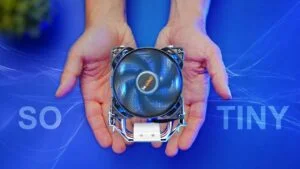ASUS ZenFone 7 – EVERYTHING New & Unboxing!

Share:
The ZenFone 7 is finally here. It’s an exciting smartphone for 2020 because I was talking to Eber and he said this is basically the ROG Gaming Phone 3, but in the ZenFone body. That is an exciting prospect from a performance standpoint, and they have basically upgraded literally everything on this versus the ZenFone 6, which by the way I still use on a daily basis.
It is my backup smartphone because of its notch-less display, really cool flip-up camera, and most importantly its 5,000mAh battery which gives you 2 days of guaranteed use. In this article, we are going to talk about everything that is new on the ZenFone 7. I will be putting my SIM card in it, using it long-term as my daily driver, but you are gonna have to wait for my long-term verdict.
Design & Features
The cameras are obviously important, but I will talk about all the changes they have done around the camera module. a bit later. The most important physical difference is the size. It’s slightly bigger at 6.67-inches versus 6.4-inches on the ZenFone 6, which means it’s a heavier and thicker device. This is not a one hand operation device. The ZenFone 6 was kind of in that space, because it was very thin and it gave you the perception of holding something slightly slimmer and smaller. We still have a USB Type-C port at the bottom, but unfortunately no headphone jack, which is so unfortunate. However, based on their market research the majority of people are gravitating towards wireless audio, so it is what it is.
The other significant physical change is the power button. It is now side-mounted and capacitive, so it acts as a fingerprint scanner that I’m pleased to report is incredibly fast. However, I find it to be a little bit unnatural because on the ZenFone 6 I’m so used to being on the back. With the power button on the side and kind of depressed, I’m just really not used to it just yet. You can customize what it does with a double tap or a long press, but overall I don’t really like the power button. Thankfully, the volume rockers are beautifully tactile, so at least that’s a positive.
The Display
The display is 6.67-inches 90Hz with a Full HD+ resolution. Obviously the 90Hz refresh rate is a benefit, it has auto functionality where it can switch between 60Hz and 90Hz depending on what you are doing. It is an AMOLED panel that is slightly brighter versus ZenFone 6, and because of the flip camera design module there is no notch, no hole cutout, it’s just a beautiful display. I wish the edges of the screen were slightly more square, because the rounding on here seems a little bit inconsistent versus what we have on the actual frame.
More Design
The ZenFone 7 comes in two colors, pastel white or a black, and I’m not a fan of the pastel white even though it does have this very cool pink illumination depending on which angle the light hits. I mainly prefer black edges on a smartphone since they make a phone appear slimmer, and on this model you can see that pastel white wrap around the frame and be visible from the front, which makes the phone appear slightly larger in your hands. The back here is glass, and unfortunately just like with the ZenFone 6 this phone is incredibly slippery, plus it’s so heavy and large that I wish that the frame would have a little bit more grip.
The Specs
Moving on with the specifications, there will be two SKUs: ZenFone 7 and ZenFone 7 Pro. Everything about them will be identical cool, except for OIS on the cameras on the Pro model and a Snapdragon 865 Plus 5G SoC on the Pro model, while the regular ZenFone 7 only has a regular Snapdragon 865. RAM capacity will be up to 8GB, storage up to 256GB, and it will have a triple tray system for dual nano SIMs and a single microSD slot, which is awesome. Both phones will have the 5,000mAh battery, which is great for a power user, especially with that 90Hz display.
With the specs out of the way, I was hoping for more cool wallpapers because there were so many awesome ones on the ZenFone 6, while here we just get 7 standard wallpapers and nothing more. I will talk about my software experience in the full review, but just like with the ZenFone 6 ASUS really tries to deliver something that is as close to stock Android as possible.
The Cameras
Leaving the best for last, the camera module has been upgraded in every way, including the motor and the camera sensors. On the ZenFone 7 we still have ultra-wide, regular, and a telephoto 3X optical zoom. The main sensor is 64MP, which is insane, the 48MP that we saw on the ZenFone 6 was already incredibly sharp given the right conditions. The 7 Pro has optical stabilization, which is necessary for low light photography and something that will give you a clearer and more detailed image versus when you don’t have OIS. The ultra-wide camera is 12MP, and from my experience it is fantastic with real-time distortion correction. If you are taking selfies with large groups of people those on the edges aren’t going to be like totally squished into the image. And the last lens is a telephoto with 3X optical zoom and OIS enabled as well, giving you a really good foundations for smartphone photography because of that flip mechanism. It’s the same sensor for selfies as you would for regular photos, which is great. As for video recording, we have 8K at 30FPS, but I’m not sure why anyone would need that on a smartphone. However, I’m really excited for 4K 120FPS, which this thing does. On paper, this phone is an absolute beast, with many software optimizations built in that I will go over my full review.
Aside from the camera sensor updates, the motor is better in every way. Durability has doubled from 100,000 flips on the ZenFone 6 to 200,000 flips, which means you can do selfie mode 100 times per day for five years. Durability should not be a concern. They have refined the step adjustment giving you a smoother motion and more control when you are in manual flip mode. It’s also really fast, so there is not really an issue of like trying to wait for it to load. We also have directional microphones, which is important if you are recording between ultra-wide, the main camera, or telephoto, the microphones do change accordingly. Based on the samples I have taken so far the camera is better versus the ZenFone 6, but you will have to wait for my full review to see any samples.
Conclusion
As for the price point, check out the links pinned down below to see how it compares with the ZenFone 6 in your area. Overall though, the ZenFone 7 and the ZenFone 7 Pro are absolute killers for 2020. It’s still a bit too large for me, but I guess it’s one of those things you have to get used to, especially when coming from smaller phone like an iPhone 10. Now it’s time to switch out my SIM card and use this thing on a daily basis. It’s good to be back on the Android, and I look forward to bringing you all a thorough long-term review.
Buy items in this review from Amazon and other partners at the links below:
Zenfone 7 – https://geni.us/ZENFONE7
Zenfone 7 Pro – https://geni.us/ZENFONE7PRO
Zenfone 6 (still awesome) – https://geni.us/ZENFONE61
Phanteks P300A – https://geni.us/P300A







































